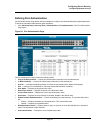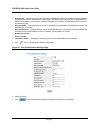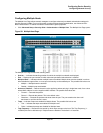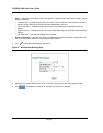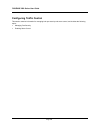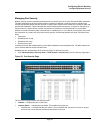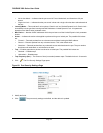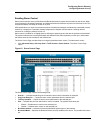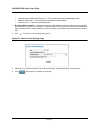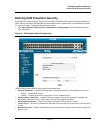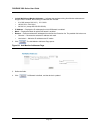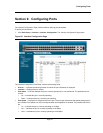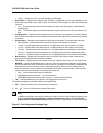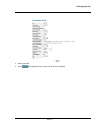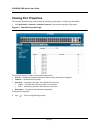
Configuring Device Security
Configuring Network Security
Page 111
Enabling Storm Control
Storm control limits the amount of Multicast and Broadcast frames accepted and forwarded by the device. When
Layer 2 frames are forwarded, Broadcast, and Multicast frames are flooded to all ports on the relevant VLAN. This
occupies bandwidth, and loads all nodes on all ports.
A Broadcast Storm is a result of an excessive amount of broadcast messages simultaneously transmitted across a
network by a single port. Forwarded message responses are heaped onto the network, straining network
resources or causing the network to time out.
Storm control is enabled for all Gigabit ports by defining the packet type and the rate the packets are transmitted.
The system measures the incoming Broadcast and Multicast frame rates separately on each port, and discards
the frames when the rate exceeds a user-defined rate.
The Storm Control Page provides fields for configuring broadcast storm control. To enable storm control:
1. Click Advanced Setup > Security Suite > Traffic Control > Storm Control. The Storm Control Page
opens.
Figure 61: Storm Control Page
The Storm Control Page contains the following fields:
• Unit No. — Indicates the stacking unit for which the storm control information is displayed.
• Copy from Entry No. — Copies the storm control parameters from the selected port.
• To Entry Numbers — Copies the storm control parameters to the selected port.
• Port — Indicates the port from which storm control is enabled. The possible field values are:
– Enable — Enables storm control on the selected port.
– Disable — Disables storm control on the selected port.
• Broadcast Control — Indicates if forwarding Broadcast packet types on the interface.
• Broadcast Mode — Specifies the Broadcast mode currently enabled on the device. The possible field values
are:



